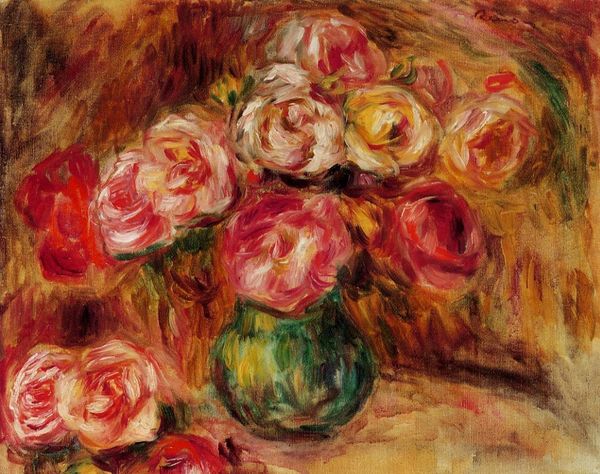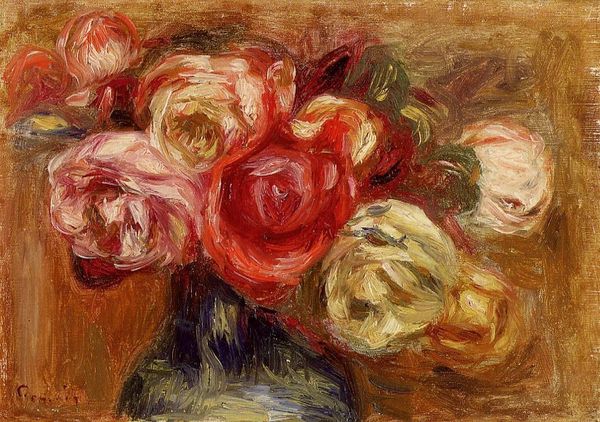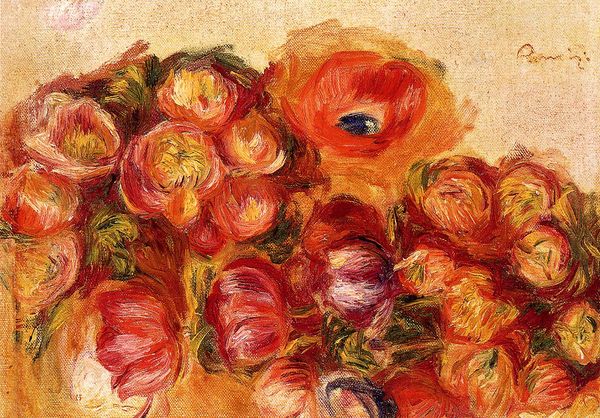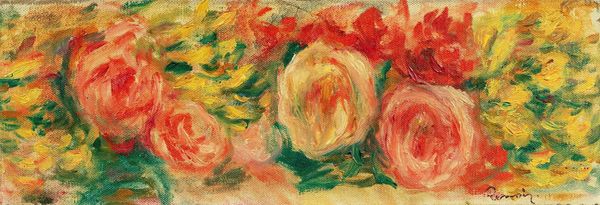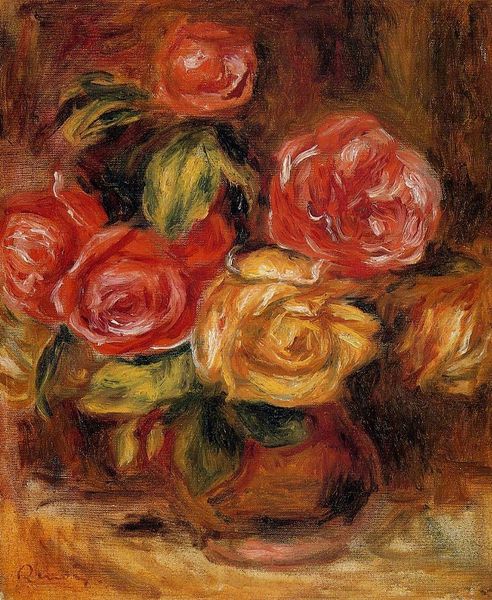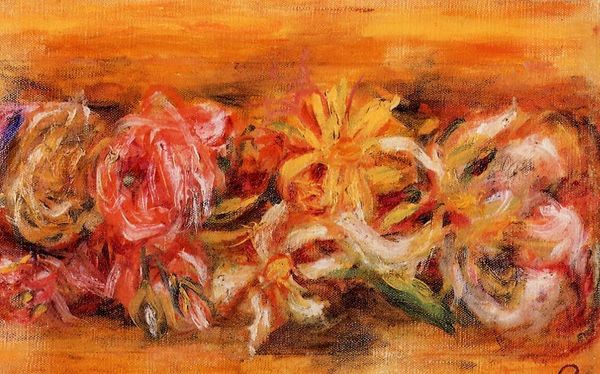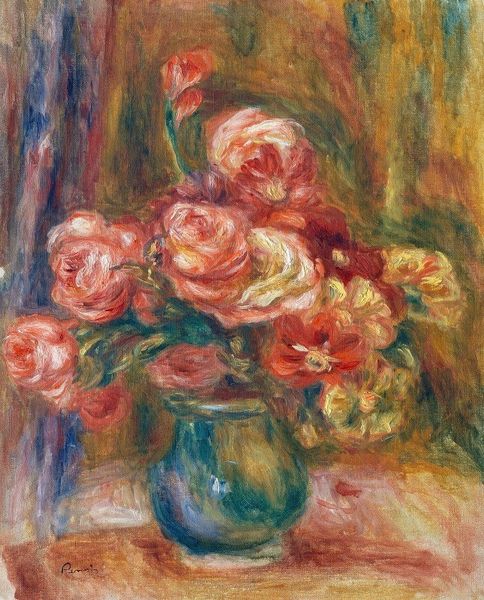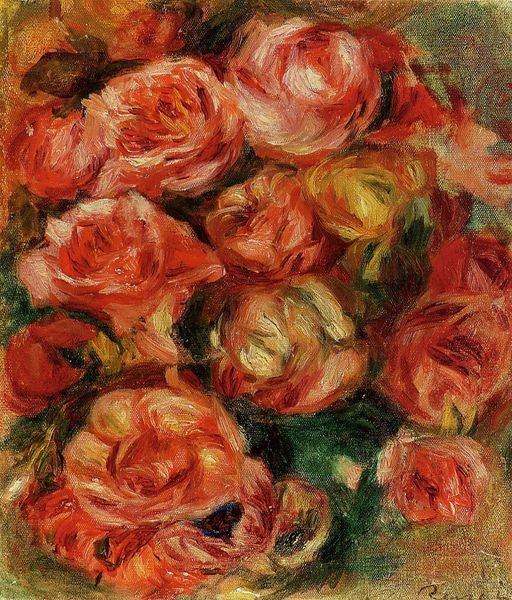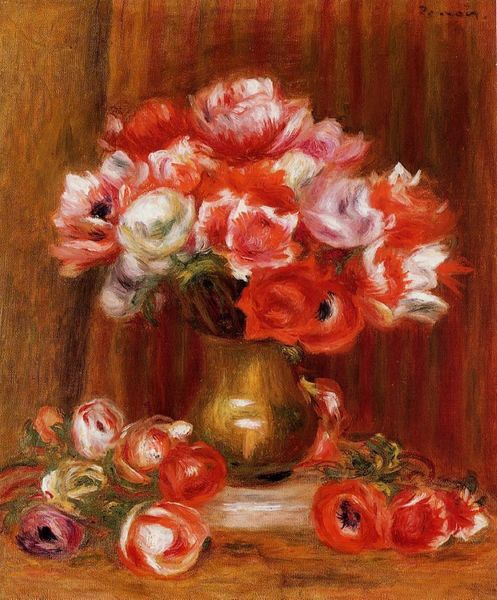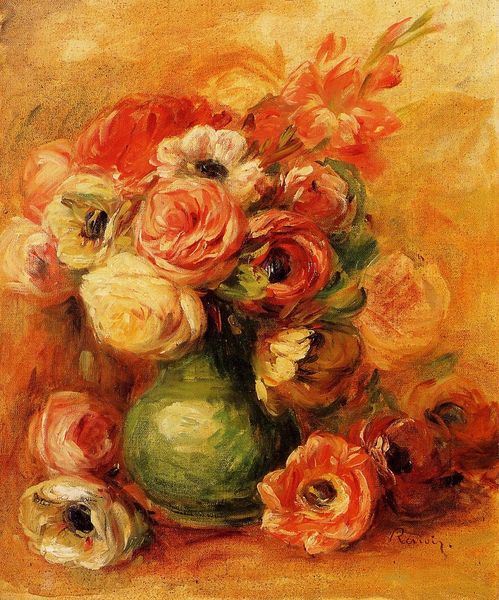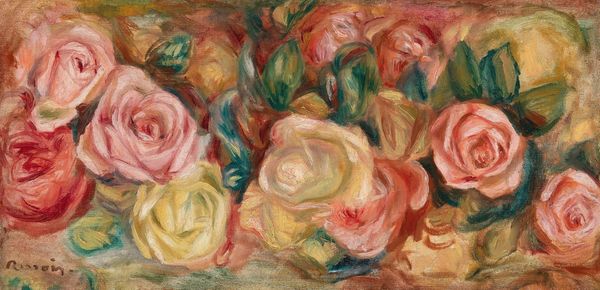
#
garden
#
abstract expressionism
#
abstract painting
#
impressionist painting style
#
flower
#
impressionist landscape
#
possibly oil pastel
#
oil painting
#
fluid art
#
acrylic on canvas
#
plant
#
painting painterly
#
expressionist
#
orange
Copyright: Public domain
With delicate brushstrokes, Pierre-Auguste Renoir captured the essence of Anemones, flowers whose name is derived from the Greek word for "windflower." These blooms are steeped in ancient myth, springing forth, as they did, from Aphrodite’s tears as she mourned the death of Adonis. This narrative imbues the anemone with a sense of sorrow and transformation. The motif of the flower is universal. Across cultures, we see its symbolism change from representations of love, beauty, and the fleeting nature of life, often tinged with sorrow. Consider how Ophelia, adorned with flowers, becomes an emblem of tragic beauty, or how flowers are laid on graves as symbols of remembrance. The anemone, in its vivid yet transient beauty, serves as a poignant memento mori, reminding us of life's ephemeral nature. It is the flower's ability to continuously resurface, evolving in meaning while retaining its primal connection to emotions, that illustrates the enduring power of symbols in our collective consciousness.
Comments
No comments
Be the first to comment and join the conversation on the ultimate creative platform.
